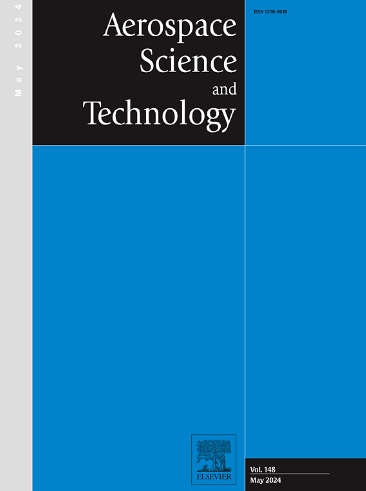Handling Qualities sizing for aerial vehicles based on control moment polytopes
IF 5
1区 工程技术
Q1 ENGINEERING, AEROSPACE
引用次数: 0
Abstract
The study of Handling Qualities (HQ) constitutes an integral part of the air vehicle design process, ensuring safety and flyability. Nevertheless, traditional HQ sizing methods derived for conventional aircraft configurations provide decreasing insight on modern, unconventional, flight-control-augmented vehicles, mainly due to the lack of related operational experience. In this article, a new HQ sizing methodology is proposed aiming at a more vehicle-agnostic approach than existent techniques. Based on the concept of state-space polytopes, the method provides a means for visualizing the HQ requirements and comparing them to the vehicle's control authority. The polytopic representation serves to compact the dynamic HQ requirements down to a limited number of quasi-equilibrium calculations and allows for the analytic derivation of “HQ gradients” with respect to the vehicle's design features; simultaneously, non-linear control saturation aspects are accounted for. Test cases on two vehicles with complex, yet very different HQ characteristics - a Blended-Wing-Body (BWB) aircraft and an electric Vertical Take Off and Landing (eVTOL) vehicle - are selected to demonstrate the technique's effectiveness and potential application domain.
求助全文
约1分钟内获得全文
求助全文
来源期刊

Aerospace Science and Technology
工程技术-工程:宇航
CiteScore
10.30
自引率
28.60%
发文量
654
审稿时长
54 days
期刊介绍:
Aerospace Science and Technology publishes articles of outstanding scientific quality. Each article is reviewed by two referees. The journal welcomes papers from a wide range of countries. This journal publishes original papers, review articles and short communications related to all fields of aerospace research, fundamental and applied, potential applications of which are clearly related to:
• The design and the manufacture of aircraft, helicopters, missiles, launchers and satellites
• The control of their environment
• The study of various systems they are involved in, as supports or as targets.
Authors are invited to submit papers on new advances in the following topics to aerospace applications:
• Fluid dynamics
• Energetics and propulsion
• Materials and structures
• Flight mechanics
• Navigation, guidance and control
• Acoustics
• Optics
• Electromagnetism and radar
• Signal and image processing
• Information processing
• Data fusion
• Decision aid
• Human behaviour
• Robotics and intelligent systems
• Complex system engineering.
Etc.
 求助内容:
求助内容: 应助结果提醒方式:
应助结果提醒方式:


